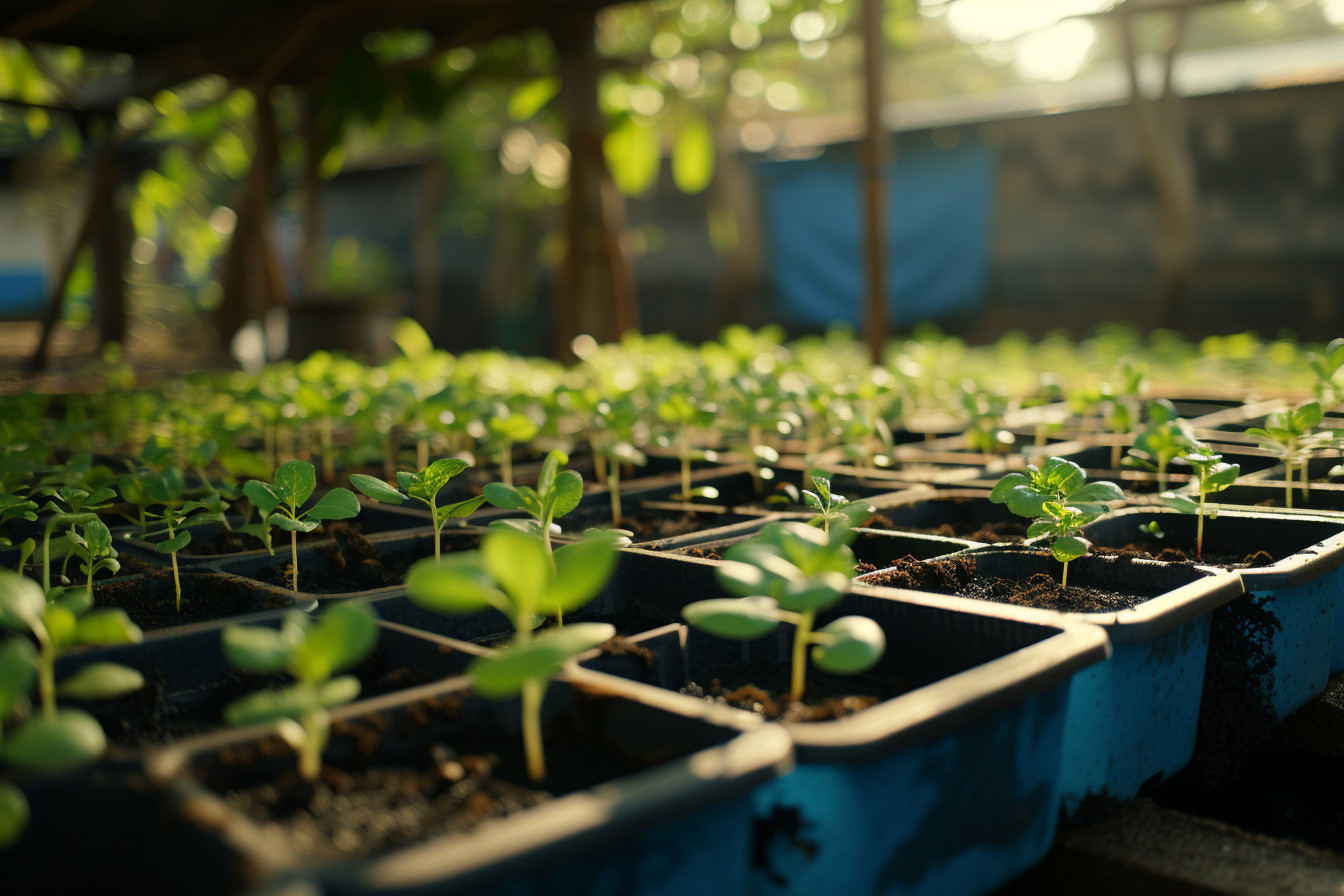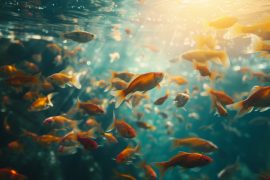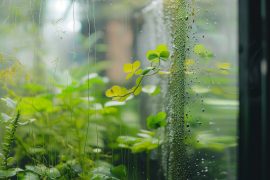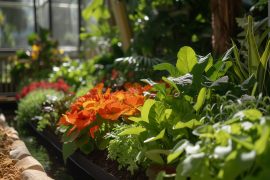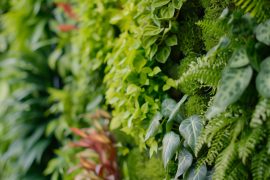Sometimes I can’t help but marvel at the ingenuity of humans, especially when it comes to solutions like aquaponics in developing countries. It’s a game changer, folks! Aquaponics combines raising fish and growing plants together in one integrated system—a sustainable solution that feels almost magical. This method uses the waste from fish to nourish plants while using less water than traditional farming, making it an ideal strategy for regions where resources are scarce.
Imagine walking into your garden and finding not only rows of lush vegetables but also tanks teeming with fish—now that’s what I call maximizing space and resources! For people living in areas where fertile land is as rare as hen’s teeth or access to clean water is limited, this isn’t just innovation; it’s hope. And let me tell you why: because having access to fresh produce and protein-rich fish directly impacts food security, improves diets, and serves up self-sufficiency on a silver platter.
Here’s another kicker. With each cycle, life thrives beneath those fluttering leaves. Emerald-green vines paint pictures too beautiful for any canvas; mere words hardly do them justice, yet here we are trying, right?
Challenges in Developing Countries
Diving into the world of aquaponics in developing nations, we’re faced with a unique set of hurdles. Implementing this sustainable solution isn’t as straightforward as it sounds.
Access to Resources: First up, access to necessary resources can be quite limited. Water quality and availability are paramount for an effective aquaponic system, but they aren’t always guaranteed. Then there’s power—reliable electricity is crucial for running pumps and maintaining systems; however, many areas still grapple with frequent outages or lack infrastructure altogether.
Infrastructure Constraints: Adequate space plays a critical role too; though aquaponics conserves water and optimizes land use compared to traditional farming methods, finding enough physical space within urban settings poses its own challenge.
- Skills Gap: Training becomes another significant barrier; introducing new technology means folks need hands-on learning opportunities that might not readily exist locally.
Benefits of Aquaponics in Developing Countries
Aquaponics, blending aquaculture with hydroponics, is revolutionizing farming practices across developing countries. It’s a beacon of hope for sustainability and food security in areas where traditional agriculture faces challenges due to water scarcity or poor soil quality.
Maximized Resource Efficiency: One of the most captivating aspects? The sheer efficiency! In regions plagued by droughts or unsuitable land for farming, this system shines bright. Using up to 90% less water than conventional gardening because it recycles fish tank water into plant beds doesn’t just sound genius; it is a game-changer!
- Water Savings: Imagine turning arid landscapes green without depleting precious groundwater reserves.
Fish and plants thrive together here, creating symbiotic relationships right out of science fiction novels but firmly anchored in real-world sustainability statistics.
| Resource | Savings (%) compared to traditional agriculture |
|---|---|
| Water | Up to 90 |
Besides being light on resources,
It crafts an opportunity zone, boosts local economies through increased produce yields, and introduces new revenue streams from both crops and aquatic creatures like tilapia.
Nutrition Fact Alert: People aren’t only biting into tastier veggies; they’re digesting higher nutrition content too since these systems allow growers control over what goes into their production cycle—ensuring harmful chemicals stay miles away from dinner plates.
Stepping back I think about how aquaponics serves as more than technology or methodology—it’s proof that when humans harmonize with nature, incredible results follow.
Notably absent are tons of typical agricultural downsides (think pesticide runoffs), leaving behind fertile grounds not just within growing tanks but extending their blessings towards surrounding communities’ wellness and the environment alike.
Ah yes, personal experiences connect stories, making them sink deeper—the tale of Mariam Bazzi springs to mind instantly.
Demonstrating true potential using minimal spaces Amidst urban sprawl in Dhaka, Bangladesh, her rooftop haven stands in juxtaposition. Against gray cityscapes proving you don’t need acres, thrive to establish resilience and self-sufficiency even in heavily populated centers.
That sense of accomplishment that nurtures life in concrete jungles resonates deeply with anyone yearning to reconnect with earthy roots. At times, modernity seems to drift apart.
Let me wrap things up by sharing something striking about my encounters with diverse international newsletter subscribers. Their words echo sentiment; regardless of country or hemisphere, struggle remains universal.
A rallying cry emerges amidst conversations. “How do I make it better?” The quest sustainable living crosses oceans and unites humanity through shared purpose discovery. Joy lies in hands-on garden labor that births growth. physical, mental, and spiritual realms in an interconnected manner.
Once thought possible, rekindled passion aligned stars favor flourishing future generations.
Case Studies in Developing Countries
Let’s dive into some inspiring stories from around the globe where aquaponics is making a real difference. In developing countries, this innovative approach isn’t just about growing food; it’s about redefining what sustainable farming looks like.
Over in Kenya, small-scale farmers have been facing drought and poor soil fertility for years. That all started to change when an NGO introduced them to aquaponics. With minimal water usage—aquaponics uses up to 90% less water than traditional agriculture—farmers could grow vegetables and fish together without stressing over scarce resources or degraded land.
Here are some quick stats I found intriguing:
| Country | People Impacted | Increase in Yield |
|---|---|---|
| Kenya | Over 500 families | Up to three times |
These Kenyan farmers aren’t just surviving; they’re thriving now that their tables (and pockets!) are full of greens and protein-rich fish meals, thanks mostly to this closed system that recycles everything nature provides!
Moving across continents, let’s talk Bangladesh! A country known for flooding during monsoon seasons faced huge crop losses year after year until they turned the table with aquaponics by their side.
The initiative allowed communities not only to keep fish-friendly points but also gave rise to floating gardens, ensuring both plants and aquatic life prosper side by side. This incredible blending of elements means that even when water rises, crops can float above disaster, literally turning challenges into growth opportunities.
Then there’s Thailand, where schools integrate aquaponic systems as part of the learning curriculum. Imagine kids learning biology, chemistry, and physics hands-on while caring for ecosystems connected directly with their everyday lives. Not random textbook scenarios THESE STUDENTS SEE RESULTS: harvest, eat fruits and vegetables nurtured through knowledge applied seamlessly as if nature were teaching us crucial themes on sustainability stewardship.
Overcoming Limitations in Aquaponics
Aquaponics, blending aquaculture with hydroponics, faces its share of challenges, especially in developing countries. But don’t fret; where there’s a will, there’s definitely a way to address these hurdles head-on.
Water quality issues—they’re real biggies—maintaining equilibrium between fishy tenants and leafy residents ain’t walkable parks. Thankfully, users leverage simple yet effective methods like regular water testing and adjusting feed rates accordingly based on seasons, change types, and plants grown.
The fact that creatively recycled rainwater harvested during the wet season further reduces reliance on external sources just goes to show human ingenuity leaps bounds when connecting dots in the sustainability circle.
Lastly, but no less critical, energy consumption sees a significant reduction through solar panels, wind turbines, and integrated setups, which ensure operations keep humming in harmony with nature. It doesn’t get much cooler than producing zero-carbon-footprint veggies.
Anyhow, power alternative renewable solutions paint a hopeful horizon and a straightforward shift toward greener practices. In short, overcoming limitations isn’t merely wishful thinking—it is a genuine possibility grounded in collective action and innovation. Let magic happen, align efforts, and let the earth whisper guidance every step forward.
Final Thought
Aquaponics presents itself as not just some trendy idea but as a real game-changer for communities struggling with limited resources. It ties together fish farming and plant cultivation beautifully—fish provide nutrients for plants while plants clean up water for fish—creating an almost poetic balance with nature that also happens to be super efficient.
I’ve learned so much about how these systems don’t need chemical fertilizers or pesticides, which means they’re kinder on our planet. Plus, using way less water than traditional agriculture is nothing short of amazing, especially in areas where every drop counts.
Here’s something interesting:
| Aspect | Benefit |
|---|---|
| Water Usage | Up to 90% less than conventional methods |
| Space | Requires significantly less area. |
Looking at stats like those makes you think hard about the potential impact worldwide, doesn’t it?
One thing’s clear from chatting with folks who actually run these setups—they’re passionate believers in sustainable living and food security being achievable goals even in tough conditions.
And yeah, there might still be challenges ahead; things like initial investment costs and technical know-how maintenance issues seem daunting, but hearing their stories reminds me that anyone with armed passion and dedication can turn obstacles into opportunities.
